一、字符串定义
1.可用" ", '' ,""" """定义
2.转译特殊字符"\"
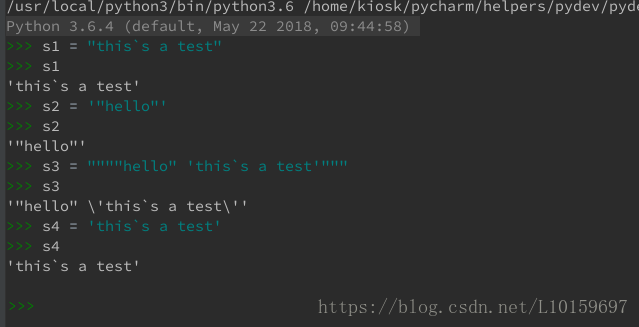
二、字符串操作
s = 'welcomewestos' ##从0开始,到length-1结束
1.索引
print(s[4]) ##打印4索引,即第5个字符
2.切片
print(s[1:3]) ##从0索引开始,到3索引结束
print(s[:]) ##打印字符串
print(s[1:5:2]) ##从1索引开始,到5索引结束,步长为2
print(s[-4:]) ##打印最后4个字符
print(s[-2]) ##打印倒数第2个字符
print(s[::-1]) ##反转字符串
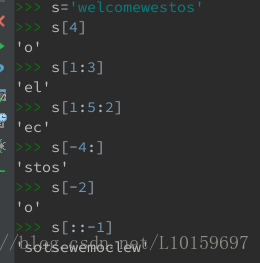
3.连接
print(“hello ” + “word”)
print(“hello ” + s)
4.重复
print(““*10 + “student” + ““*10)
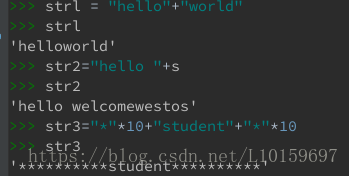
5.成员操作符
print("com"in s) ##字符串s是否含有com
print("test"in s)
6.计算长度 len(s)
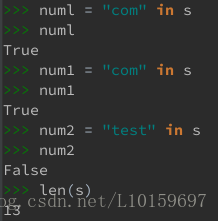
练习:
1.遍历打印字符串s,要求以tab键隔开
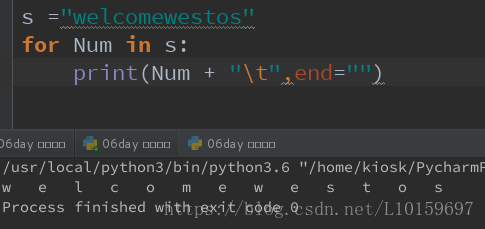
2.判断回文数

三、循环语句
1.for-else ###实现登陆效果,三次不对报错!
for count in range(3):
user = input("please input a username:")
passwd = input("please input a passwd:")
count += 1
if user == "root" and passwd == "123":
print("Login sucessfully")
break
else:
print("user or passwd is error!!")
else:
print("Error:Time is over")
please input a username:root
please input a passwd:1
user or passwd is error!!
please input a username:file
please input a passwd:12
user or passwd is error!!
please input a username:root
please input a passwd:23
user or passwd is error!!
Error:Time is over
2.while-else ###实现登陆效果,三次不对报错!
count = 0
while count < 3:
user = input("please input a username:")
passwd = input("please input a passwd:")
count += 1
if user == "root" and passwd == "123":
print("Login sucessfully")
break
else:
print("user or passwd is error!!")
else:
print("Error:Time is over")
please input a username:root
please input a passwd:12
user or passwd is error!!
please input a username:file
please input a passwd:34
user or passwd is error!!
please input a username:root
please input a passwd:23
user or passwd is error!!
Error:Time is over四、字符串处理
1.字符串的搜索与替换
s = “hello everyone,welcome to westos”
print(s.find("e")) ##从start开始查找e,打印匹配的索引值
print(s.rfind('e')) ##从end开始查找e,打印匹配的索引值
print(len(s))
print(s.replace('s','E')) ##将s替换成E

2.删除空格
s = ” hello ”
print(s.strip()) ##删除所有空格,包括\n,\t
print(s.lstrip()) ##删除左边空格
print(s.rstrip()) ##删除右边空格
print(s.replace(' ',''))
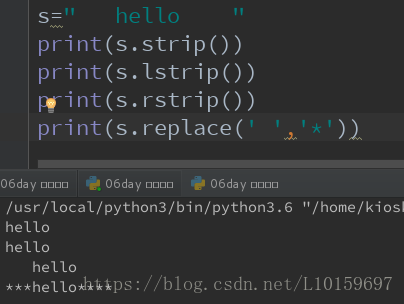
3.字符串对齐
s = “student system”
print(s.center(20)) ##字符串行长度20,s放中间
print(s.center(20,'*')) ##字符串行长度20,s放中间,其他用*补全
print(s.ljust(20,'*')) ##字符串行长度20,s放左边,其他用*补全
print(s.rjust(20,'*')) ##字符串行长度20,s放右边,其他用*补全

4.字符统计
s = ‘hello everyone,are you tired?’
print(s)
print(s.count('e')) ##统计e出现的次数
print(s.count('re')) ##统计re出现的次数
print(s.count('lo')) ##统计lo出现的次数
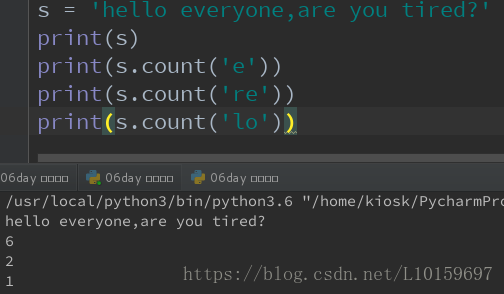
5.字符开头
str1 = ‘http://test’
str2 = ‘https://test’
str3 = ‘ftp://test’
str4 = ‘file://test’
print(str1.startswith(('https://','http://'))) ##或
print(str1.startswith('https://')) ##判断str1的开头
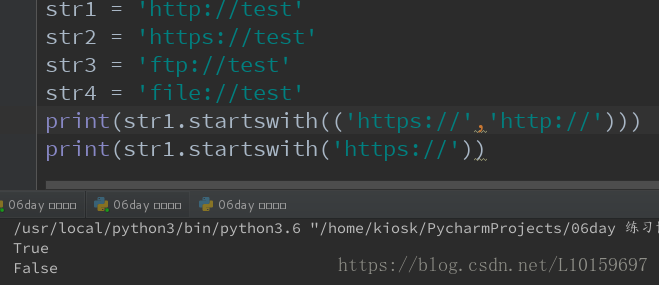
6.字符结尾
str1 = ‘hello.jpg’
str2 = ‘hello.img’
str3 = ‘hello.png’
print(str1.endswith('.png')) ##判断str1的结尾
print(str1.endswith(('.png','.jpg'))) ##或
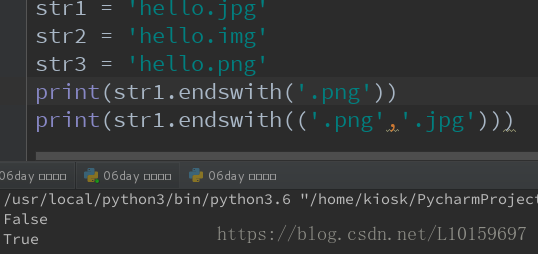
7.字符串的连接与分离
ip = ‘172.25.33.321’
print(ip.split(' . ')) ##以’.’为分隔符,分离ip
print(ip.split(' . ')[::-1]) ##将分离结果倒序打印
info = ‘23+45+12’
print(eval(info)) ##求和
new_info=info.replace('+','*') ##替换字符
print(eval(new_info)) ##求积
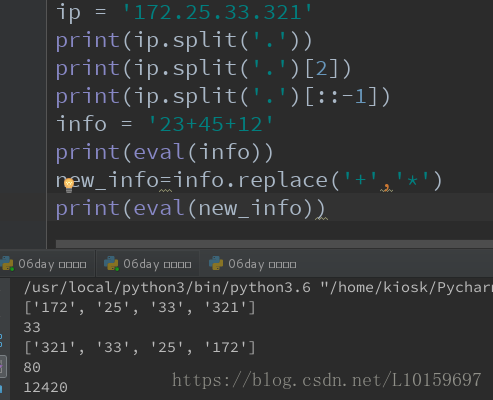
8.判断字符串索引的类型
s.isalnum() ##判断是否都是字母或数字
s.isalpha() ##判断是否都是字母
s[4].isdigit() ##判断索引4是否为数字
s.islower() ##判断是否都是小写
s[10].isspace() ##判断索引10是否为英文空格
s.istitle() ##判断是不是都是标题(有大小写)
s.isupper() ##判断是不是都为大写字母
练习:
1.判断ip是否合法
ip = input("IP:")
ip_s = ip.split('.')
if len(ip_s) == 4:
for item in ip_s:
item = int(item)
if not 0 < item < 255:
print("%s不合法" %(ip))
break
else:
print("%s合法" %(ip))
else:
print("%s不合法不为4段" %(ip))
IP:111.111.111.1111
111.111.111.1111不合法
IP:111.111.111.111
111.111.111.111合法2.打印/var/log目录下以.log结尾的文件
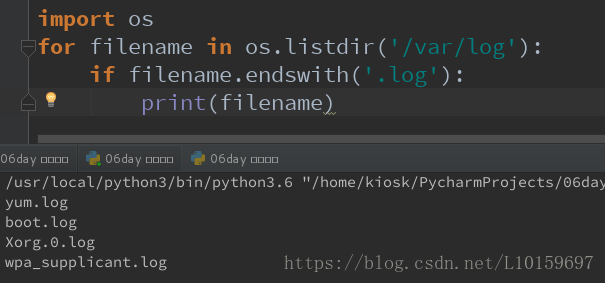
8.最大值、最小值
print(max('hello')) ##比较ASCII码
print(min(‘hello’))
print(ord('t')) ##打印t的ASCII码值
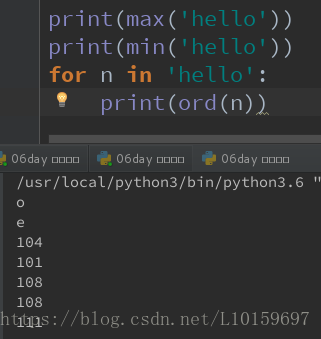
python3:没有cmp函数,比较大小;但是python2有
9.枚举
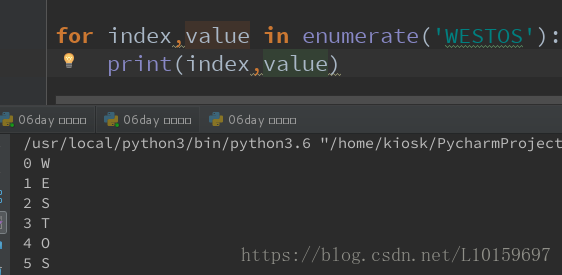
10.zip

s1 = 'hello' ##一一对应,多的不做处理
s2 = 'westos'
11.join
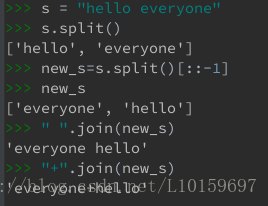
五、练习
1.求给定字符串中数字、字母、空格和其他字符的个数:
s = input("输入统计字符串:")
letter_count = space_count = num_count = other_count = 0
for i in range(0,len(s)):
if s[i].isalpha():
letter_count += 1
elif s[i].isspace():
space_count += 1
elif s[i].isdigit():
num_count += 1
else:
other_count += 1
print("this str has %s spaces,%s digits,%s letters,%s other char" %(letter_count,space_count,num_count,other_count))
输入统计字符串:saeufh548yw0i
this str has 9 spaces,0 digits,4 letters,0 other char2.求给定字符的最大公约数和最小公倍数:
num1 = int(input("请输入第一个数字"))
num2 = int(input("请输入第二个数字"))
num3 = min(num1,num2)
for i in range(num3,0,-1):
if num1%i == 0 and num2%i == 0:
res = i
break
print("%s和%s的最大公约数为%s" %(num1,num2,res))
请输入第一个数字5
请输入第二个数字4
5和4的最大公约数为1
5和4的最小公倍数为20




















 2万+
2万+

 被折叠的 条评论
为什么被折叠?
被折叠的 条评论
为什么被折叠?








